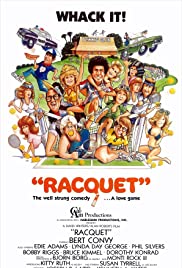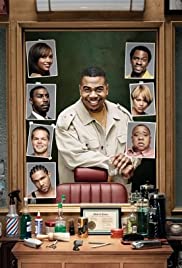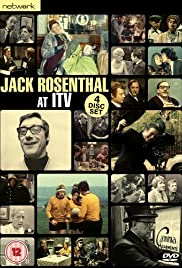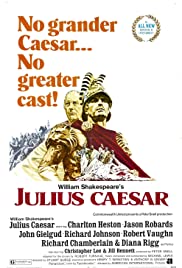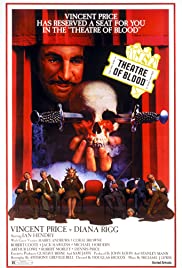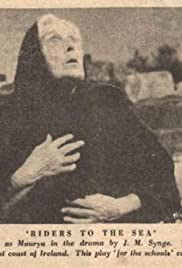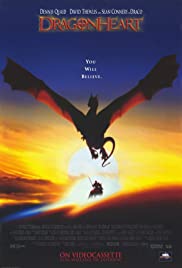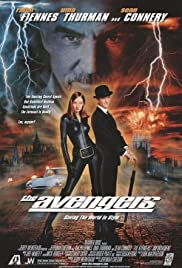
Englishman. Likes eggs, preferably Fabergé. Likes dice, preferably fully loaded. British MI6 agent 009 drops off a fake Fabergé jewelled egg at the British embassy in East Berlin and is later killed at Octopussy’s travelling circus. Suspicions mount when the assistant manager of the circus who happens to be exiled Afghan prince Kamal Khan (Louis Jourdan), outbids 007 James Bond (Roger Moore) for the real Fabergé piece at Sotheby’s. Bond follows Kamal to India where Bond thwarts several ingenious attacks, kidnapping by Kamal and encounters Kamal’s ally, the anti-heroine of the title (Maud Adams), an international smuggler who runs the circus as a cover for her illegal operations. It seems that Orlov (Steven Berkoff), a decidedly rank and belligerent Russian general is planning to raise enough money with the fake Fabergés to detonate a nuclear bomb in Europe and then defeat NATO forces once and for all in conventional warfare… The West is decadent and divided. The thirteenth in the series and Moore’s seventh appearance as the sexy superspy as well as the first to feature Robert Brown as M following Bernard Lee’s recent death, this is derived from a number of Ian Fleming’s stories: the title is from his 1966 short story collection and there is a scene inspired by another story, The Property of a Lady (included in 1967 and later editions of Octopussy and The Living Daylights), as well as one brief bit of characterisation lifted from Moonraker; while the events of the titular story Octopussy form a part of the title character’s background which she relates herself; but the bulk of the narrative is original, the screenplay credited to novelist George MacDonald Fraser who suggested that it be set in India, series regular Richard Maibaum & producer Michael G. Wilson. In fact Moore had intended retiring from the role but was deemed the most profitable actor for the part when the rival production Never Say Never Again with former Bond Sean Connery was up and running at the same time: James Brolin was apparently due to take over from Moore – can you imagine! The perception of this as the weakest of Moore’s particular Bond films doesn’t hold up despite its apparently problematic heroine (her MO is a bit slight) but Bond’s seduction of a woman who is his equal is particularly well observed – in fact they both have a death to avenge. The narrative is especially prescient – to have a nuclear bomb planned for Germany, at the time the centre of Cold War fears (see the TV show Deutschland 83 for a dramatic interpretation of the time), feels utterly relevant and Moore is given great space for both humour and action, pitched at a perfect balance here and decidedly lacking in camp. It’s probably the best written of all his Bond iterations. The chases (and there are quite a few) are brilliantly mounted, including trains, planes automobiles and elephants and there’s a great homage to The Most Dangerous Game when our man is the jungle prey. The climactic aerial stunts are some of the most astonishing you’ll ever see – utterly thrilling. Legendary tennis player Vijay Amritraj has a great supporting role as Bond’s MI6 ally in India and even Q (Desmond Llewelyn) gets in on the action with a fabulous hot air balloon! Jourdan makes for a suitably insidious villain and Berkoff (almost!) has a blast as the nutty military man who makes the KGB’s Gogol (Walter Gotell) look sane. There is a terrific performance by Kristina Wayborn as Kamal’s stunning henchwoman Magda – her exit from a night with Bond has to be seen! Adams had of course appeared opposite Moore in previous Bond outing The Man With the Golden Gun as Scaramanga’s doomed mistress and she gets to flex more muscles here albeit her entrance is not until the film’s second half. Watch out for former Pan’s People dancer Cherry Gillespie as Midge, one of Octopussy’s bodyguards. It’s wonderfully paced, with each sequence superseding the action of the previous one and the flavourful locations are beautifully captured by Alan Hume’s cinematography: this has undergone a pristine restoration. Among the very best Bonds, an episode whose influence can clearly be seen in both the Indiana Jones and Mission: Impossible franchises. The theme song, All Time High is written by John Barry and Tim Rice and performed by Rita Coolidge. Directed by John Glen, the second of his five outings at the helm. Perfect escapism. Mr Bond is indeed a very rare breed, soon to be made extinct









